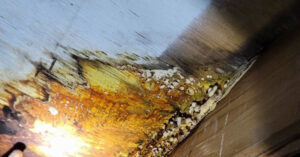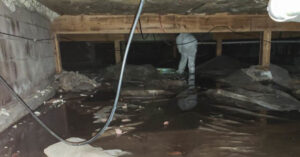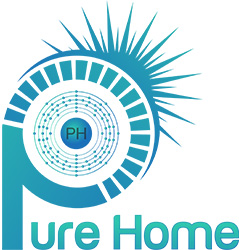Crawl Space Water Removal: Preventing Mold and Moisture Issues
Crawl spaces are narrow, shallow areas beneath homes that provide access to plumbing, electrical wiring, and ventilation systems. Excess moisture in crawl spaces is the most common cause of mold growth and is the more likely place in your home that would require eventual mold remediation. This article will inform you about the importance of crawl space water removal to prevent mold growth and other moisture-related problems.
Understanding Crawl Space Water Removal
Understanding crawl space water removal is essential in order to prevent mold and moisture issues in your home. Here are the steps you need to take to effectively remove water from your crawl space:
- Thoroughly inspect the area to gain an understanding of the source of water intrusion.
- Utilize a pump or wet vacuum to eliminate any standing water.
- Utilize dehumidifiers, fans, or natural ventilation to dry out the space.
- Address the underlying issue, such as repairing leaky pipes or enhancing drainage.
- Clean and disinfect the crawl space to prevent the growth of mold.
- Implement preventive measures, including the installation of a vapor barrier or a sump pump.
By following these steps, you can ensure that your crawl space remains dry and healthy. In the case of extensive water intrusion or if you require additional assistance, it is advisable to consult a professional.
Why is Crawl Space Water Removal Important?
Crawl space water removal is crucial to prevent the growth of mold, which poses health risks, as well as to avoid structural damage and poor air quality in homes. Excess water in crawl spaces can weaken the structure of the house, leading to buckling or warped floors. Moreover, high humidity levels and poor air quality can result in discomfort and respiratory issues.
To address these concerns, it is essential to have a proper drainage system, sump pump installation, and waterproofing techniques in place. Regular inspections, along with proper ventilation and prompt repairs, are necessary for maintaining a dry crawl space.
The Dangers of Excess Water in Crawl Spaces
Excess water lurking in crawl spaces can spell trouble in multiple ways. From harmful mold growth and potential health risks to structural damage and compromised air quality, the dangers are real. In this section, we’ll dive into the perils associated with water accumulation in crawl spaces, shedding light on the risks of mold, the potential harm to the structure, and the adverse effects on air quality. Brace yourself for some eye-opening facts and insights that will highlight the importance of tackling this issue head-on.
Mold Growth and Health Risks

Mold growth in crawl spaces poses significant health risks to homeowners. The presence of mold can lead to potential respiratory issues, allergies, and other health problems, indicating underlying water damage and structural issues. To mitigate these health risks, it is crucial to address crawl space water issues promptly. This can be achieved by implementing proper drainage systems, sump pump installation, waterproofing techniques, and moisture barrier installation. Regular inspections, proper ventilation, and monitoring humidity levels are key to preventing mold growth and minimizing associated health risks.
Structural Damage

Excess water in crawl spaces can cause significant structural damage, leading to costly repairs. Here are some key factors contributing to structural damage:
| 1. Moisture Weakens Foundation | Excess moisture can weaken the foundation walls and footings, compromising the structural integrity of the entire building. |
| 2. Wood Rot and Decay | When water is present for a prolonged period, it can cause wood to rot, leading to sagging floors, weakened support beams, and potential collapse. |
| 3. Cracked and Shifting Walls | Continuous exposure to moisture can cause clay soils to expand, resulting in cracked or shifting walls, which can lead to further structural damage. |
Addressing crawl space water issues promptly and implementing effective waterproofing techniques can help prevent structural damage and maintain a safe and sturdy foundation.
Increased Humidity and Poor Air Quality
Increased humidity in crawl spaces can result in poor air quality and a range of issues. The heightened moisture can create the ideal conditions for the growth of mold, which can emit harmful spores into the air and contribute to respiratory problems. Moreover, the elevated levels of humidity can induce structural damage, including wood rot and corrosion of metal supports.
The presence of damp air can also make the crawl space uncomfortable and unpleasant. To mitigate these problems, it is crucial to ensure proper ventilation and the installation of a moisture barrier. Conducting regular inspections and promptly addressing water damage can further help maintain a dry crawl space and enhance air quality.
Preventing Crawl Space Water Issues
Preventing crawl space water issues is crucial to avoid the harmful effects of mold and moisture. With the right techniques and installations, such as a proper drainage system and sump pump, water can be effectively managed in crawl spaces. Waterproofing techniques and moisture barrier installations play a vital role in preventing further water damage. Learn how these measures can protect your property and keep crawl spaces dry and mold-free.
Proper Drainage System
A proper drainage system is crucial for preventing water issues in crawl spaces. It plays a vital role in directing water away from the foundation and ensuring that water does not accumulate in the crawl space. A well-designed drainage system may consist of various components such as French drains, gutters, downspouts, and grading, all working together to redirect water flow. By implementing a proper drainage system, homeowners can effectively manage water and significantly reduce the risk of mold growth, structural damage, and poor air quality in their crawl spaces.
Even in ancient civilizations like Mesopotamia and Egypt, the concept of a proper drainage system was highly valued in preventing flooding and managing water. These civilizations constructed complex networks of canals and drains to divert excess water from agricultural lands and settlements. They understood the significance of having efficient drainage systems in place to maintain the structural integrity of their buildings and ensure the well-being of their communities.
Sump Pump Installation
- Start the sump pump installation: First, it is essential to choose the right location in the crawl space where water tends to accumulate.
- Begin the excavation: Dig a sump pit deep enough to accommodate the sump pump basin for effective crawl space water removal.
- Proceed with basin installation: Take the plastic basin and place it into the pit, making sure it is level and stable.
- Connect the discharge pipe: Attach the discharge pipe to the sump pump, directing it away from the foundation to ensure proper water removal.
- Ensure water flow prevention: Install a check valve on the discharge pipe to prevent any water from flowing back into the pit, keeping the crawl space dry.
- Establish the power supply connection: Connect the sump pump to a dedicated electrical outlet to provide it with the necessary power for operation.
- Verify proper functionality: Test the sump pump’s effectiveness by filling the pit with water and observing its performance.
- Protect the system: Cover the pit with a suitable cover to prevent debris from falling in and minimize moisture accumulation.
Waterproofing Techniques
- Implementing effective waterproofing techniques is vital for mitigating water damage in crawl spaces.
- Analyze and seal any cracks or gaps present in the crawl space walls or foundation.
- Install a reliable drainage system to redirect water away from the crawl space area.
- Administer a waterproof coating or membrane on both the walls and floor to effectively prevent water infiltration.
- Integrate a encapsulation or a vapor barrier to thwart the seepage of moisture.
- Ensure proper ventilation in order to encourage air circulation and prevent condensation.
- Follow a regular maintenance schedule in order to promptly identify and address any potential issues that may arise.
Moisture Barrier Installation
Moisture barrier installation is a crucial step in preventing crawl space water issues and maintaining a dry environment. Here are the steps to properly install and maintain a moisture barrier:
- Clean and prepare the crawl space by removing any debris or moisture sources.
- Cover the crawl space floor with a durable plastic sheet or vapor barrier material for effective moisture barrier installation.
- Overlap the seams of the barrier and secure them with heavy-duty tape or adhesive to create a tight seal that prevents water penetration.
- Extend the barrier up the walls of the crawl space and secure it in place to ensure full coverage.
- Seal any gaps or openings, such as vents or pipes, with caulk or foam insulation to prevent moisture infiltration.
- Regularly monitor the moisture levels in the crawl space and promptly address any signs of water damage to prevent further issues.
Remember, proper moisture barrier installation and maintenance is essential in preventing mold growth, structural damage, and maintaining good air quality in your crawl space.
Professional Crawl Space Water Removal
When it comes to removing water from your crawl space, leave it to the professionals. In this section, we’ll dive into the world of professional crawl space water removal. From mold remediation experts to advanced water extraction techniques, we’ll explore the steps taken to ensure your crawl space is dry and free from moisture issues. And that’s not all – we’ll also delve into the importance of drying and dehumidification, as well as the benefits of crawl space encapsulation. Get ready to learn how the pros handle crawl space water removal like champs!
Mold Remediation Experts
Mold remediation experts are crucial when it comes to effectively eliminating and preventing mold in crawl spaces. There are several reasons you should seriously consider hiring professionals for this task:
- Expertise: Professionals specializing in mold remediation possess extensive knowledge and experience in identifying and treating mold issues in crawl spaces.
- Advanced Techniques: These experts utilize specialized equipment and techniques to safely and efficiently remove mold, making sure it does not spread any further.
- Prevent Future Mold Growth: Skilled professionals can address the root cause of the mold problem and implement preventive measures to significantly minimize the risk of future mold growth.
- Health and Safety: Mold can pose serious health risks, particularly for those with respiratory conditions or allergies. Mold remediation experts prioritize your well-being and safety throughout the entire process.
Sarah had been experiencing persistent health issues and noticed a damp, musty odor in her home. Concerned, she decided to enlist the assistance of mold remediation experts. They efficiently discovered extensive mold growth in the crawl space and promptly took action. Through the proper removal of mold, implementation of adequate ventilation, and installation of a moisture barrier, Sarah’s health significantly improved, and the mold problem was successfully resolved.
Water Extraction Techniques
- Water extraction techniques are crucial for effectively eliminating water from crawl spaces. Here are some steps to follow for successful water extraction:
- Assess the extent of water damage and identify the water source.
- Use submersible pumps or wet/dry vacuums to extract standing water.
- Employ dehumidifiers and fans to dry out the remaining moisture in the crawl space.
- Inspect and rectify any leaks or damage that may have caused the water accumulation.
- Consider implementing a moisture barrier to encapsulate the crawl space and prevent future water issues.
Remember to wear protective gear and seek professional assistance for larger water extraction projects. By implementing these water extraction techniques, you can effectively remove water from crawl spaces and mitigate mold and moisture-related problems.
Drying and Dehumidification
- To effectively remove water from a crawl space, drying and dehumidification are essential steps. Here is a comprehensive guide to follow:
- Start by using pumps or wet vacuums to extract any standing water.
- Next, make sure to remove any water-damaged materials such as insulation or carpeting.
- Set up dehumidifiers to decrease humidity levels and facilitate the drying process.
- Improve air circulation by using fans and ventilation systems.
- Regularly monitor humidity levels and make necessary adjustments to the dehumidifiers.
- Continue the drying process until moisture levels reach an acceptable range.
- Thoroughly inspect the area to ensure there is no remaining moisture and that it is completely dry.
- If needed, apply waterproofing treatments to prevent future water intrusion.
By following these steps, you can effectively dry and dehumidify your crawl space, minimizing the risk of mold growth and structural damage.
Crawl Space Encapsulation
Crawl space encapsulation is the process of sealing off the crawl space area in your home to prevent moisture and water intrusion. This technique offers several benefits for homeowners, including:
- Preventing mold and mildew growth by creating a moisture barrier
- Improving indoor air quality by reducing humidity levels
- Increasing energy efficiency by preventing air leaks and drafts
- Protecting the structural integrity of your home by preventing water damage
Crawl space encapsulation involves using materials like plastic sheeting, vapor barriers, and insulation to seal off the crawl space area completely. It is recommended to hire professionals for proper installation to ensure long-lasting benefits.
Signs of Crawl Space Water Damage

Discovering crawl space water damage is crucial in preventing further issues like mold growth and excessive moisture. In this section, we will uncover the signs that indicate potential water damage in your crawl space. From musty odors to visible mold growth, buckling or warped floors, and even increased energy bills, we’ll explore these telltale indicators that could be a result of water infiltration. Stay tuned to learn how to identify and address crawl space water damage before it becomes a major problem.
Musty Odors
Musty odors in crawl spaces are often a sign of water damage or mold growth. To address this issue, follow these steps:
- Inspect for water leaks or sources of moisture, such as damaged pipes or improper drainage.
- Remove any standing water using a sump pump or wet/dry vacuum.
- Eliminate mold and mildew by cleaning affected surfaces with a mixture of water and bleach.
- Improve ventilation by installing vents or fans to promote airflow.
- Use a dehumidifier to reduce humidity levels and prevent moisture buildup.
- Consider encapsulating the crawl space with a moisture barrier to prevent future water intrusion.
- Regularly monitor the area for any signs of water damage or musty odors and address them promptly.
Visible Mold Growth
Visible mold growth in crawl spaces is a clear indication of water damage and should not be ignored. Mold thrives in damp environments and can spread rapidly, compromising the air quality in your home and posing health risks. To address visible mold growth in crawl spaces, prompt action is crucial. The following steps can help mitigate the issue: 1) Identify the source of water intrusion and fix any leaks or drainage issues. 2) Remove the mold and affected materials. 3) Properly dry and dehumidify the area. 4) Consider encapsulating the crawl space for long-term protection. Taking these measures will not only eliminate visible mold growth but also prevent future moisture issues.
Buckling or Warped Floors
Buckling or warped floors can indicate water damage in crawl spaces. Excess moisture can cause wood floors to warp or buckle, leading to potential structural issues. It is crucial to promptly address this problem to prevent further damage. Proper drainage systems, sump pump installation, and moisture barrier installation are effective methods for addressing buckling or warped floors. Additionally, regular inspections and monitoring of humidity levels are essential for maintaining a dry crawl space. A true story that emphasizes the significance of addressing buckling or warped floors involves a homeowner who disregarded the issue, resulting in extensive structural damage and costly repairs.
Increased Energy Bills
Excess water in crawl spaces can result in higher energy bills. When water permeates the crawl space, it can make the insulation and HVAC ducts moist, reducing their efficiency and forcing your HVAC system to work harder in order to maintain the desired temperature. This augmented workload leads to amplified energy consumption and consequently elevated energy bills. By preventing water issues in the crawl space through the implementation of appropriate drainage systems, sump pump installation, waterproofing techniques, and moisture barrier installation, you can ensure a dry crawl space and avoid the adverse impact on energy bills. Regular inspections, adequate ventilation, and prompt water damage repair are crucial for the maintenance of a dry crawl space.
Maintaining a Dry Crawl Space
A dry crawl space is key to preventing mold and moisture issues, and there are several measures you can take to maintain it. From regular inspections to proper ventilation and diligent monitoring of humidity levels, we’ll explore the strategies that keep your crawl space dry and free from water damage. Let’s dive into the details of each sub-section: regular inspections, proper ventilation, monitoring humidity levels, and prompt water damage repair. Say goodbye to crawl space woes and hello to a clean and dry foundation!
Regular Inspections
Regular inspections play a vital role in maintaining a dry crawl space and preventing mold and moisture issues. The importance of regular inspections can be summarized as follows:
- Early detection: By conducting regular inspections, homeowners can identify any signs of water damage or mold growth in the crawl space before they escalate into major issues.
- Preventive measures: Regular inspections enable prompt implementation of necessary preventive measures to tackle potential water intrusion or moisture problems effectively.
- Maintenance: Ensuring the crawl space remains in good condition, regular inspections facilitate timely repairs and maintenance.
- Monitoring: Inspections help to monitor the humidity levels in the crawl space, ensuring they stay within the acceptable range and preventing the growth of mold.
By prioritizing regular inspections, homeowners can proactively address crawl space water issues and maintain a healthy living environment.
Proper Ventilation
Proper ventilation is crucial for the prevention of mold and moisture issues in crawl spaces. To ensure adequate ventilation, follow these steps:
- Install vents: Strategically place vents to allow for air circulation in the crawl space.
- Clean vents: Regularly clean and remove any debris or blockages that may impede airflow.
- Use fans: Incorporate fans to promote airflow and eliminate stagnant air.
- Control moisture: Employ dehumidifiers or moisture barriers to prevent excessive moisture accumulation.
By implementing these measures for proper ventilation, you can effectively maintain a dry crawl space and prevent problems associated with mold and moisture.
Monitoring Humidity Levels
Monitoring humidity levels in a crawl space is crucial for preventing mold and moisture issues. Here are some steps to effectively monitor humidity levels:
- Regularly use a hygrometer or moisture meter to monitor humidity levels.
- Ensure the crawl space maintains an ideal humidity range between 30-50% for a healthy environment.
- Utilize a dehumidifier to remove excess moisture and maintain optimal humidity levels.
- Promote air circulation and prevent moisture buildup by ensuring proper ventilation in the crawl space.
- Address any water leaks or plumbing issues promptly to prevent moisture intrusion.
In 2019, a homeowner in Florida failed to monitor the humidity levels in their crawl space. As a result, excessive moisture led to the growth of mold, causing significant damage to the structure and compromising the air quality in their home. This incident emphasizes the importance of regularly monitoring and maintaining optimal humidity levels in crawl spaces.
Prompt Water Damage Repair
- Prompt water damage repair is crucial to prevent further deterioration of the crawl space and to ensure a healthy living environment. Here are some steps to take for prompt water damage repair:
- Identify the source of water intrusion and fix it immediately.
- Remove any standing water or excess moisture using extraction methods.
- Thoroughly dry the crawl space using dehumidifiers and fans.
- Inspect for any signs of mold growth and perform mold remediation if necessary.
- Repair any structural damage caused by water, such as sagging or rotting beams.
- Seal cracks and openings to prevent future water intrusion.
Remember, prompt action is essential to prevent further damage and minimize the risk of mold and other related issues. Don’t hesitate to seek professional help if needed. By addressing water damage promptly, you can ensure a dry and safe crawl space for your home.
Frequently Asked Questions about Crawl Space Water Removal
What are some common causes of mold growth in crawl spaces?
Some common causes of mold growth in crawl spaces include excessive moisture from sources such as leaky pipes, condensation, or flooding. Other contributing factors can be poor ventilation, lack of light, and dampness caused by wet ground or a high water table.
How can I prevent mold growth in my crawl space?
To prevent mold growth in your crawl space, you can take several preventative measures. These include inspecting foundation cracks or leaks, ensuring proper drainage features to divert rainwater away from your home, checking for plumbing leaks, insulating crawl space pipes to prevent condensation, using vapor barriers to keep moisture out, and ensuring adequate ventilation in the crawl space.
What health hazards can mold in crawl spaces cause?
Mold in crawl spaces can release microscopic spores into the air, leading to respiratory problems such as breathing difficulties, coughing, wheezing, sinus infections, and allergic reactions. Prolonged exposure to mold can also cause more severe health issues, including flu-like symptoms, chronic fatigue, neurological problems, cognitive issues, and compromised immune systems.
Can I treat mold in my crawl space myself?
It is recommended to seek professional help due to the health risks associated with exposure to mold spores. Professional mold remediation companies have the necessary tools and expertise to safely and effectively remove mold from crawl spaces.
What are the signs of a mold infestation in a crawl space?
Some signs of a mold infestation in a crawl space include a musty odor, dampness or excessive moisture, visible patches of mold growth on surfaces, damaged or discolored materials, pest infestations, and allergic reactions such as itchy eyes, stuffy nose, itchy throat, skin rashes, and joint pain. Recurring sinusitis or respiratory issues can also indicate a mold problem.
Is it necessary to install crawl space vents to prevent mold growth?
No, installing crawl space vents is not the most effective method to prevent mold growth. Ventilation methods for crawl spaces are not as effective as in other parts of the house. Instead, it is recommended to focus on measures such as repairing foundation cracks, improving drainage, installing sump pumps, using vapor barriers, ensuring proper insulation, and maintaining adequate ventilation in the crawl space.



